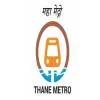What is the current market for telehandlers in India?
As the Indian market matures, global best practices are making their way into the Indian material handling industry. There is an increased focus on productivity and safety on worksites, which presents us with the opportunity of introducing solutions with the latest and state-of-the-art technology in India. The demand for safe and reliable material handling products is fast growing across India’s wide spectrum of applications.
Telehandlers are gaining popularity and are today being used in three core sectors – agriculture, construction and industry. Some examples are hopper loading in ready mix concrete, ceramic products and metal scrap recycling plants. In rail/road/hydel tunnel projects, the JCB telehandler with Man Platform provides a safe working platform for technical personnel. Telehandlers are used for horizontal and vertical movement of prefabricated components and aggregate material in the construction and infrastructure sector.
The unique Q-Fit feature in JCB telehandlers enables easy and quick changeover of attachments, thereby increasing the versatility of the machines. An unloading rake attachment enables easy unloading of aggregate material from trucks. Different sizes of standard and grab buckets enable usage in industries like paper, metal scrap rehandling and coal rehandling. The Man Platform attachment has made the JCB telehandler a ‘must have’ for construction companies for any rail, road and hydel tunnel and bridge construction projects.
In times to come, with an increased thrust on palletisation, one of the major demand drivers will be discrete material handling and vertical stacking in huge warehouses and at transhipment points. Similarly, mechanisation of agriculture and agri products industries offers opportunities for telehandlers in areas like husk handling in biofuel plants, bagasse handling in sugar mills, compost handling in mushroom farms and silage handling for the timely supply of cattle feed.
What are the various product offerings from your company in this segment? What is its USPs?
JCB has been manufacturing telehandlers globally since 1977. It is today, the world’s leading manufacturer of these machines. JCB offers a range from 7 m to 20 m lift height in India. With a wide range of attachments customised for specific applications in various industries, they come with an all-new global side engine design to enhance all-around higher visibility, reliability, safety and comfort while delivering high productivity at the worksite.
JCB India currently offers four variants of the telehandler - the Made in India 530-70 and 530-110, and additionally, we have a 17m machine which is the 540-170 for high lift and reach applications, which is imported from the UK. We recently launched the 4 tonne telescopic handler 540-70. Some notable key features of these machines are as follows:
The 530–70, 540-70 and 530–110 come with the CEV Stage IV compliant JCB ecoMax 444 engine. A robust and narrow chassis along with a standard four-wheel drive for better traction make these machines well suited for material handling requirements.
With the engine being on the side, the operator gets greater visibility which enhances safety. Lower NVH levels and an air-conditioned cab ensure operator comfort. JCB was the first to comply with the latest CEV stage IV emission standards.
JCB’s made in India telehandlers come fitted with a 74hp turbo charged diesel engine.
Unmatched stacking and dumping capability of up to 7 m, 11 m and 17 m on 530-70, 540-70, 530-110, 540-170 respectively.
Forward reach of 3.83 m in the JCB 530-70, 3.84 m in the 540-70 and 7.52 m in the JCB 530-110 respectively.
During Excon 2021, we launched the 4 t telescopic handler, the 540-70. With a maximum lift height of 7m, and a maximum lift capacity of up to 4 t, it has a Q-fit mechanism for a quick change of attachments that make the machine multipurpose. With an air-conditioned, 360° high-visibility global design cabin and ROPS and FOPS, this new machine is well suited for all material handling requirements of customers, especially in high-capacity RMC plants and stone quarries.
A few of the key benefits offered by JCB telehandlers are as follows:
Global side engine design: The JCB telehandler comes with global side engine design with Hi-Viz low boom mounting ensuring high visibility all around, thus enhancing site safety. Engine installation makes it easy for ground-level service and safe access. Its robust chassis offers high structural life and single lifting ram provides uniform lifting force on the boom.
Safety and comfort: The machine provides customers unmatched safety and comfort. The Cabin of the machine has an air-conditioner available as a standard feature for operator comfort and helps in increasing productivity. The cabin is also fitted with rolling over protection system and falling over protection system that enhance the operator safety. It has an Integral lateral load moment indicator to warn the operator in case the load exceeds the limits and has a stabiliser cut-off for safe working operation. Smooth and ergonomically installed control levers provide low effort and are responsive for total control and precise load placement at the required reach or height.
Superior design: The machine comes with a legendary ‘U’ shaped boom and a single closing plate welds to reduce joints and stress points. It has boom overlapping for the structural rigidity of the boom. Hydraulic extension rams with no chains are suited for heavy-duty bucket arduous bucket applications. These world-class aggregates help JCB telehandlers deliver inherent reliability of the equipment.
These machines come with a variety of attachments which makes them versatile. The widely used attachments are a shovel, heavy duty forks, grabs, unloading rake, crane hook - fork mounted, jib crane, grain bucket, cotton bucket, power grab, man platform and drum handlers, etc.
Every machine incorporates the traditional JCB strengths of ruggedness, reliability, structural integrity, performance, visibility and safety. With the use of JCB’s purpose-designed attachment range further enhancing the tasks possible, the world-class range of Made in India JCB telehandlers offer exceptional versatility, productivity and reliability for all material handling applications.
Along with quality and durability, another key factor in maximising machine uptime is easy serviceability. With a side engine design, all checks are quick, simple and safe to carry out from ground level and most service intervals, including boom lubrication.
The lifting capacity of 3,000 kg, long reach and impressive lift height (7 m to 20 m) in JCB telehandlers are complemented by a wide range of attachments (over 40), which makes these machines the first choice of machines in the construction and infrastructure domain.
What are the major changes taking place in terms of technology?
JCB India has pioneered the integration of digital technology in its range of machines through advanced Telematics called ‘LiveLink’. JCB machines work in off-road and often remote locations and LiveLink helps in remote monitoring and fleet management on the key parameters of service, operations and security of equipment.
LiveLink now helps over 2,10,000 JCB machines communicate in real-time on machine location, operations, performance, downtime, service alerts and security. The technology enables better site management and equipment utilisation, thereby improving operational efficiency and cost-saving. Geo-fencing and time-fencing have enhanced the security of these machines.
Technology has been transforming the way machine-to-machine and machine-to-customer business is being done. All vital information about the machine is available to customers on their mobile devices through a web browser or also through the ‘LiveLink’ mobile application. Additionally, the system also sends out alert SMSs to registered mobile numbers.
LiveLink benefits customers in better fleet and fuel management by enabling remote monitoring and management of their machines. It incorporates GPS, telecommunications, machine electronics and IoT, enabling the equipment to remain in contact with the owner, dealer and JCB.
Accurate monitoring of machine hours and service alerts improve maintenance. Technical alerts and maintenance history data help customers manage the machine health to keep their machines running or maximum uptime and return on investment. Early warnings with detailed machine history enable users to plan work effectively.
This cutting-edge technology can help lower servicing and running costs by ensuring machines are operated to their optimum performance, reducing fuel consumption and unnecessary machine wear. By monitoring idle-time and real-time fuel consumption, LiveLink helps manage the whole life cost of ownership, driving down costs, driving up productivity. It also helps keep machines safe and improves control over machine misuse. Alerts can be set up for when a machine is moved out of or into a predetermined zone, these geofences are customisable to the space required.
How do you look at the future market for telehandlers in India?
Infrastructure development and the economy are interlinked and directly impact one another. The Gati-Shakti Programme has integrated all infrastructure activity in real-time. This will be a game changer as it will promote greater cohesion between different departments.
The government continues its focus on infrastructure development through allocations in the budget. This year has a 35.4 per cent increase in infra-Capex outlay taking it to Rs 7.5 lakh crore. Further Rs 60,000 crore have been allocated for 3.8 crore houses for drinking water under the Nal se Jal programme. Rs 48,000 crore for 80 lakh affordable housing houses will create infrastructure building opportunities. Significant allocation to States to cover PMGSY, digitisation, OFC networks and a new master plan for expressways will support our business.
Two key sectors are set to emerge in the coming years – the first being Infrastructure development in rural India and the other will be the creation of world-class healthcare infrastructure across the country. These sectors along with highway development plans are bound to contribute to the Indian economy.
Products such as telehandlers are best suited for these projects due to their versatility and safety. They deliver a combination of value, new digital technology and world-class quality.
At a national level, an impetus for roads and highways, railways, irrigation and large projects like Sagarmala and Bharatmala would drive demand for construction equipment. Additionally, the focus on creating 100 new airports, smart cities and metro projects will certainly open newer opportunities ultimately resulting in improved demand for construction equipment. Additionally, PMGSY and rural roads will boost demand.





















